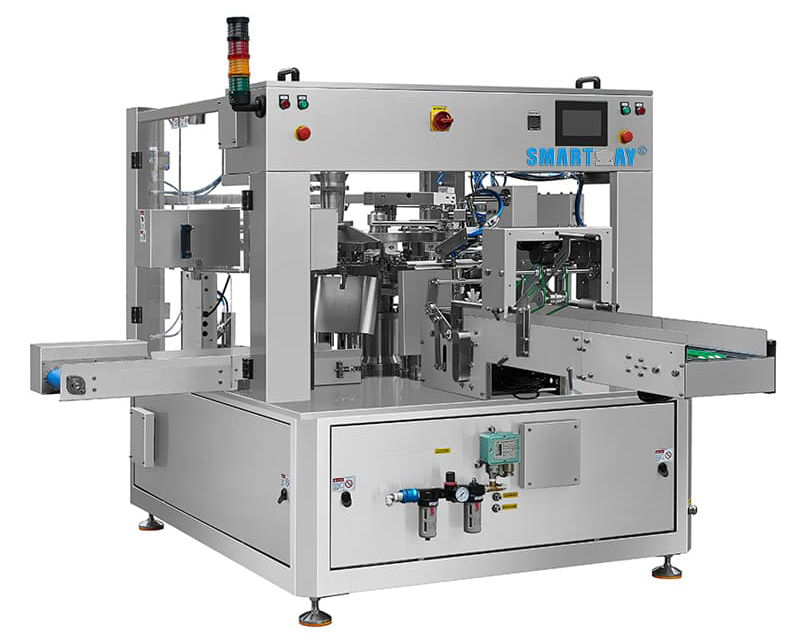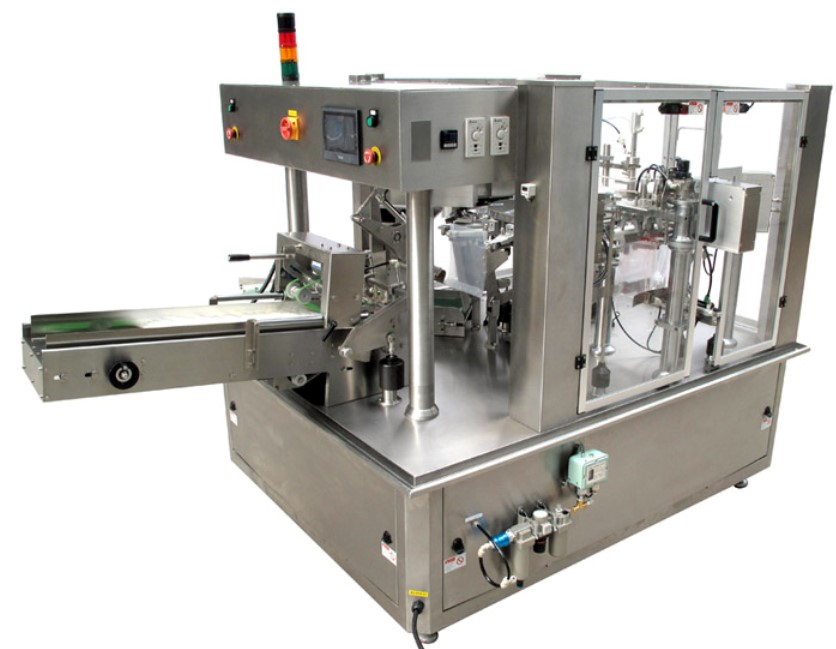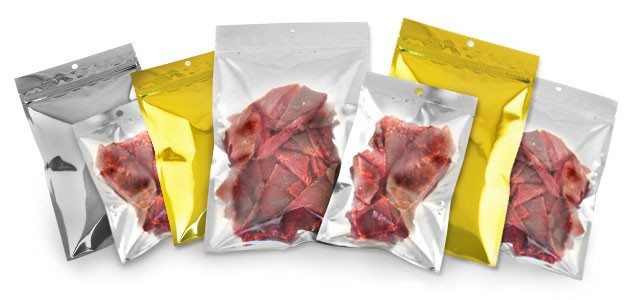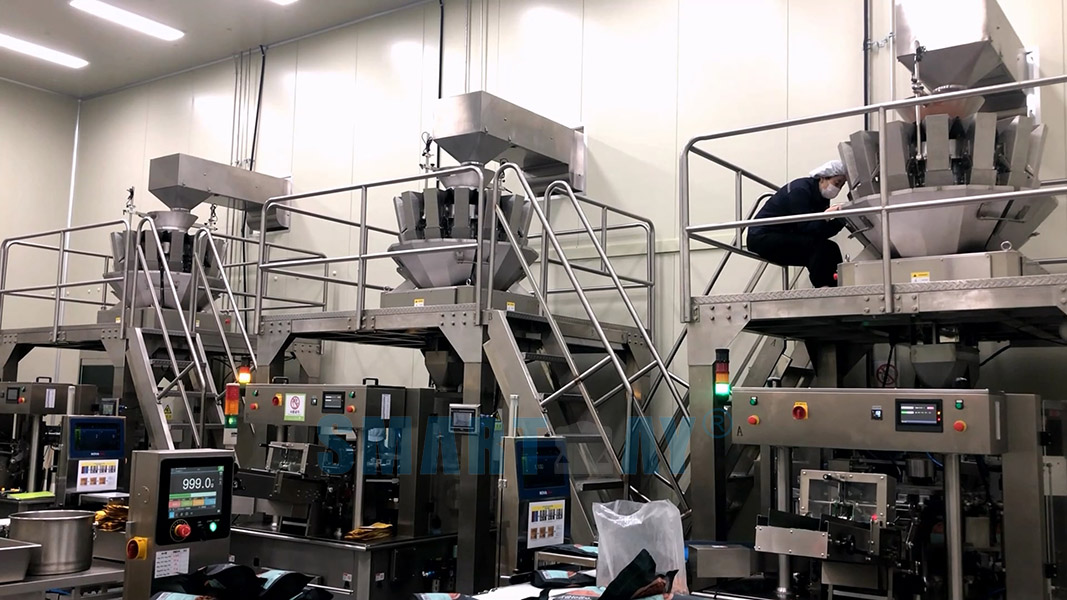Since 2012 - Smart Weigh is committed to helping clients increase productivity at a reduced cost. Contact us Now!
Since 2012 - Smart Weigh is committed to helping clients increase productivity at a reduced cost. Contact us Now!
Modern industrial packaging operations rely on rotary packing machines that save labor and time. These versatile systems are the lifeblood of multiple industries. Pharmaceuticals, nutraceuticals, food, and chemicals all benefit from the machine's adaptability to various packaging needs.
Rotary machines come in single-sided and double-sided configurations to match different production scales. Business owners running large-scale facilities or managing growing operations must understand the machine's key features. Speed control, compression capabilities, and safety mechanisms are vital aspects to consider for an informed purchase decision.
This article explores everything business owners need to know about selecting, implementing, and maintaining the right rotary packaging machine for their specific requirements.
A rotary packaging machine is an automated system designed for efficient, high-speed packaging. It works through a circular motion system. Products move through multiple stations on a rotating turntable. The machine handles pouch picking up, printing, filling and sealing tasks in a continuous cycle. The machine runs through a series of precise mechanical actions and control systems that automate the packaging process. With a single setup, it can pack up to 50 bags per minute. Dual configurations can push this number even higher to 120 bags per minute.

Rotary packaging machines are instrumental in rice packaging due to their ability to handle large volumes efficiently while maintaining consistency. They can accommodate various packaging materials, including single layer pouches, laminated films, and biodegradable bags, making them an ideal choice for diverse business needs.
These essential components work together:
Function: The pouches are loaded onto the machine for processing.
Details: This station automatically feeds pre-made pouches into the machine, usually from a stack or roll. The pouches may be loaded into a pouch magazine, and then the machine picks them up one at a time for the next steps. The feeding system ensures that pouches are properly aligned and ready for the subsequent operations.
Function: This station picks up the individual pouches and positions them for filling.
Details: A suction or mechanical arm picks up each pouch from the feeding area and places it in the correct orientation for the filling and sealing processes. The system is designed to handle delicate or irregularly shaped pouches and ensures smooth, continuous operation. Sensors monitor the pouch position to avoid misplacement.
Function: To apply product information, branding, or barcodes to the pouch.
Details: This station is where the pouch is printed with necessary details like expiration dates, batch numbers, logos, or barcodes. It typically uses thermal transfer or inkjet printing technology, ensuring that the print is clear and accurate. The print quality and placement must be precise to meet regulatory and customer standards. Some systems include a date coder to print the manufacturing or expiry date directly onto the pouch.
Function: The pouch is filled with the product.
Details: The filling station is responsible for accurately dispensing the product into the pouch. This could be a liquid, powder, granules, or other materials. The filling mechanism varies depending on the product type:
● Auger fillers for powders and granules.
● Piston or volumetric fillers for liquids.
● Multihead weigher for irregularly shaped solid products. The filling station is typically integrated with weighing systems to ensure precise filling for each pouch.
Function: The pouch is sealed to contain the product and protect it.
Details: This station seals the open end of the pouch after it has been filled. The sealing process can vary depending on the type of pouch and product.
Each station is designed to optimize performance for different types of products and packaging requirements. Its construction uses food-grade materials and stainless steel to meet strict hygiene standards.
As long as the empty pouches is supplied is sufficient, the system's design allows non stop operation, cutting downtime and boosting overall output. The machine works with many pre-made pouch materials, including plastic films, aluminum foils, and laminated pouches, giving you options for different packaging needs.

Modern premade pouch packaging operations just need superior speed and reliability. A rotary packaging machine works exceptionally well in many areas.
Rotary packaging machines can pack up to 50 bags per minute. We designed these machines with continuous motion that reduces manual labor and delivers consistent output. These machines handle large orders and meet tight deadlines without compromising quality.
The advanced weighing system will give a perfect measurement for each package. These machines use precise control mechanisms to maintain uniform quality standards in different batches. The automated controls work best when you have to prevent product waste and keep inventory accurate.
These machines adapt well to handle packaging materials and formats of all types:
● Paper, plastic, foil and non-woven bags
● Multiple bag sizes from small to large
● Different types of product varieties
The original investment might seem high, but rotary pouch packing machines are a great way to get long-term financial benefits. These energy-efficient operations use less power and automated processes cut labor costs. These machines quickly pay for themselves through reduced waste, lower operating costs, and increased production capacity. Precise filling and automated operation lead to minimal product loss. The consistent packaging quality helps maintain brand value and keeps customers satisfied.
Manufacturing plants can choose from several different rotary packaging machine setups that match their production needs. Each setup has specific benefits that work well for different packaging requirements.
A standard 8-station setup runs at speeds up to 50 pieces per minute. These machines come with PLC touch-screen control systems and servo-driven platforms. The design works with many pouch sizes, handling widths from 90mm to 250mm. This setup works best for medium-scale operations that need steady output without losing precision.
Dual-8 station machines pack twice as much while staying accurate. These systems can hit speeds of up to 120 cycles per minute. They work best with smaller pouches up to 140mm wide and excel at packaging jerky, snacks, and similar items. The dual-lane design doubles your output while using a little bigger floor space as single-lane machines.
Today's integrated systems combine multiple functions into one unit, designed to optimize packaging processes with unmatched speed and accuracy. The system seamlessly integrates key components like multihead weighers for precise weighing and auger fillers for consistent product dosing, ensuring perfect portion control for powders, granules, and liquids.
Post-packaging, the machine works in harmony with checkweighers to verify weight accuracy and metal detectors to ensure product safety and compliance. By combining these critical processes into one streamlined operation, the Integrated Rotary Packing Machine enhances efficiency, reduces waste, and delivers consistent, high-quality results - making it the ultimate choice for modern production lines.
Buyers must evaluate several key features to choose the right rotary packaging machine that matches their operational needs.
Ensure the machine can handle the types of product you process, whether it’s snacks, jerky or dried fruits, and support your preferred packaging materials. Modern rotary machines are designed to efficiently handle a variety of packaging options, including paper and plastic bags, pre-made film laminated bags, stand-up pouches with or without zippers, and three and four-side sealed bags.
Different models offer varying production volumes. Standard machines can process 25-55 bags per minute, but this changes based on product weight and how you fill them. The best models can pack up to 50 items every minute through continuous rotary motion.
Modern rotary packaging machines go beyond standard setups and let you customize them to your needs. You can choose from auger fillers for powders, piston fillers for liquids, and multihead weigher for granular products. These systems work with pouches ranging from 80-250mm in width to 100-350mm in length.
Modern interfaces make these machines simple to operate and maintain. Recipe-driven Human Machine Interfaces (HMI) shows you the complete packaging line status at a glance. Quick-change parts let you adjust formats without tools in just 5-10 minutes. Your operators can handle production changes easily without deep technical knowledge.

A business needs to assess several key factors before buying a rotary pouch packing machine. This checklist will give a clear path to optimal selection:
● Production Volume Assessment: Consider your current output and future growth plans to ensure the machine can meet your demands. Determine the speed you require, measured in bags per minute, and account for any seasonal fluctuations in production.
● Space and Infrastructure Requirements: Next, assess the space and infrastructure requirements. Ensure you have enough floor space for the machine's installation and operation, leaving additional room for maintenance. Check that your facility's electrical system is compatible with the machine's specifications and that ventilation and temperature control are adequate for smooth operation.
● Technical Specifications: Examine the machine’s technical specifications to ensure compatibility with your product type, whether it handles powders, liquids, or solids. Review its material handling limits and confirm it integrates seamlessly with your existing systems to maintain workflow efficiency.
● Budget Considerations: Budget is another key consideration. Calculate the total cost of ownership, including the initial purchase price, installation, and training. Look for energy-efficient models to save on operational costs and plan for ongoing maintenance and spare parts.
● Safety and Compliance: Safety and compliance are crucial. Make sure the machine includes safety features like emergency controls and meets all relevant industry regulations. Verify that it complies with the certification standards required for your business.
● Supplier Evaluation: Finally, evaluate the supplier. Research their reputation and read customer reviews to ensure reliability. Check the quality of their after-sales support and service to ensure you can access help if needed. By following these steps, you can make an informed decision and choose the right machine for your business.
Proper maintenance is key to extending the lifespan and ensuring the optimal performance of your rotary pouch packing machines.
1. Regular Cleaning: Prevent contamination by cleaning the machine thoroughly after each production cycle.
2. Scheduled Inspections: Check for wear and tear to avoid unexpected breakdowns.
3. Lubrication: Keep moving parts well-lubricated to reduce friction and ensure smooth operation.
4. Follow Manufacturer’s Guidelines: Adhere to the maintenance schedule and procedures recommended by the manufacturer.
The success of a company often depends on its packaging equipment purchases. Many companies struggle to make smart investments in rotary packing machines because they overlook some common pitfalls.
The original project specifications often change after manufacturing starts. This raises costs and causes delays. Companies should discuss their packaging needs in detail before they contact manufacturers. These discussions must cover bag sizes and machine speeds.
Companies often miss the real return on investment because they overlook key factors. The ROI calculations must include packaging output rates, labor costs, and waste numbers. Yes, it is possible that automation might not make sense, especially when packaging volumes are low.
Equipment integration creates another major challenge. Buyers often fail to tell manufacturers about their existing equipment that needs integration. Without doubt, this creates compatibility problems and longer downtimes. Teams must define who handles different system parts before installation begins.
Smart Weigh Pack stands out as a trusted leader in the weighing and packaging industry, offering innovative solutions tailored to diverse industries. Our rotary packaging machines are designed precisely, ensuring high-speed performance, seamless operation, and reduced material waste.
With over a decade of expertise since 2012, we combine cutting-edge technology with an in-depth understanding of industry requirements to offer reliable and customizable solutions. Our skilled R&D team and 20+ global support engineers ensure seamless integration into your production line, catering to your unique business needs.
Partnered with clients in over 50 countries, Smart Weigh stands out for its commitment to quality, cost-efficiency, and exceptional 24/7 customer support. By choosing us, you empower your business to boost productivity, enhance packaging precision, and achieve significant operational savings with a trusted partner in innovation.

Rotary packaging machines are vital for businesses needing fast and reliable packaging solutions. These machines create value through exact measurements and consistent quality. Their adaptable setup works well with different operational needs.
Your success with rotary packaging equipment relies on a few key factors. You need to think over your business needs and plan the implementation well. Production volumes, space constraints, technical details, and future costs play a crucial role in making the right choice.
Smart buyers know the value of partnering with trusted manufacturers who provide complete support. Businesses ready to explore rotary packaging solutions can visit Smart Weigh. The website offers expert guidance and detailed machine specifications.
A rotary packing machine becomes a valuable asset with proper care. Regular maintenance schedules and well-trained staff help avoid common issues. The right machine choice paired with good management brings great returns. You'll see boosted productivity, less waste, and reliable packaging quality.
CONTACT US
Building B, Kunxin Industrial Park, No. 55, Dong Fu Road , Dongfeng Town, Zhongshan City, Guangdong Province, China ,528425
How We Do It Meet And Define Global
Related Packaging Machinery
Contact us, we can give you professional food packaging turnkey solutions

Copyright © Guangdong Smartweigh Packaging Machinery Co., Ltd. | All Rights Reserved